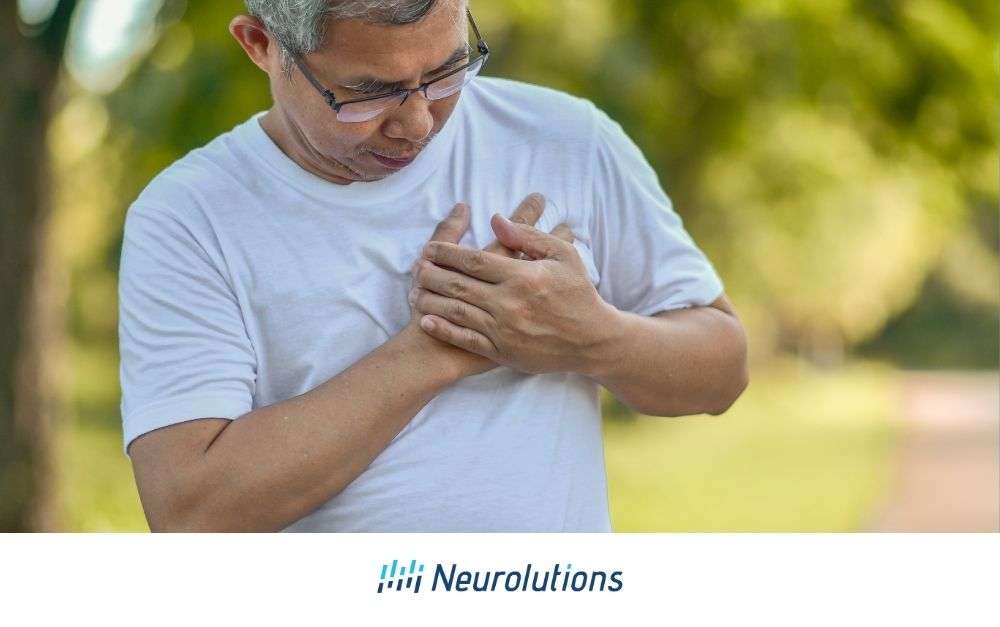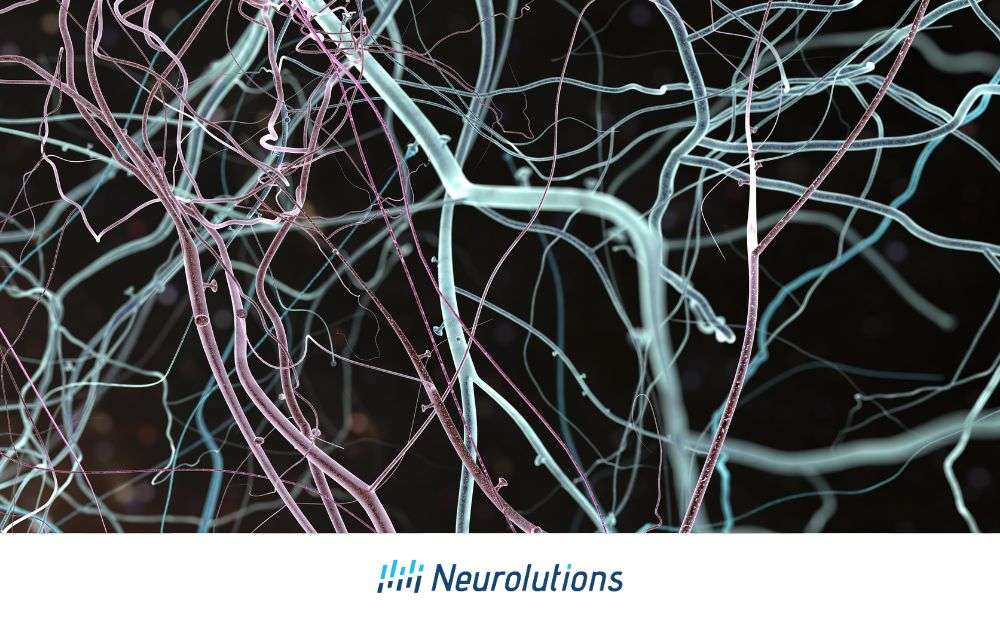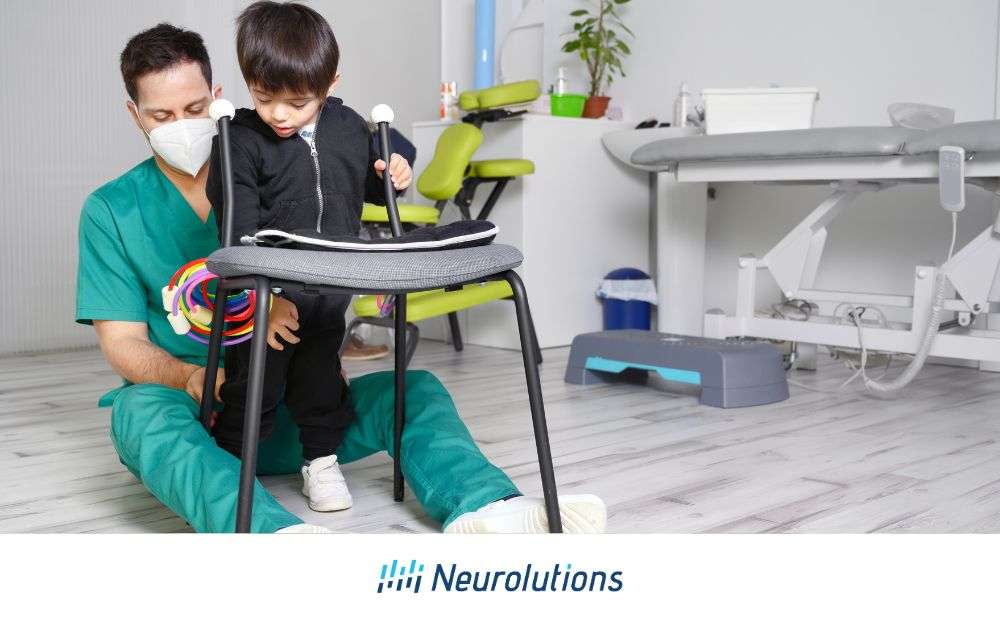A Comprehensive Guide to Contracture Causes, Prevention, and Treatments
Abnormal structural changes to muscles, tendons, ligaments, or skin cause the elastic parts of the human body to lose their ability to move. This is termed a contracture. Contractures are typically caused by an extended period of inactivity in a body part, such as following a paralyzing stroke or spinal cord injury. Contractures most often affect muscles, tendons, or ligaments. As a result, they generally hinder the movement of joints, rendering the affected joint incapable of achieving a full range of motion. Hand and foot contractures are among the most common, with 41% occurring only in the hands (1).
Described below are the causes, prevention, and treatment of contractures. Additionally described are rehabilitation approaches, and the impact on daily life of living with contractures.
What are Contractures and How Do They Form?
The human body is designed to move, and lack of movement can result in the replacement of normally elastic tissues by inelastic ones through a process known as fibrosis. This can result in a disabling contracture. In addition to prolonged lack of movement, certain diseases and injuries can cause the fibrosis that leads to contractures. These include (2):
- Severe muscle and bone injuries
- Brain and nervous system disorders and injuries such as stroke, Traumatic Brain Injury (TBI) or Cerebral Palsy
- Hereditary disorders such as Muscular Dystrophy or Bethlem Myopathy
- Nerve damage negatively impacting muscle movements
Not only do contractures prevent movement, but they also typically lead to deformities in the affected body part. For example, injury to the muscles of the forearm can cause a specific type of contracture, Volkmann’s Ischemic Contracture, that can result in permanent deformity of the fingers, hand, and/or wrist (3).
Different Types of Joint Contractures:
The three different types of joint contractures are:
- Myogenic: This type of contracture is most often found in people with some type of neurological damage, such as due to stroke, TBI, Multiple Sclerosis, and Cerebral Palsy (4).
- Arthrogenic: This type of contracture is most often found in people with Osteoarthritis (A), Systemic Sclerosis, and/or intra-articular fractures (4).
- Soft tissue: These contractures are most often found in people who have experienced soft tissue injuries, such as wounds and/or burns (4).
Pain from Contracture:
People with arthrogenic joint contractures often experience pain and physical difficulty when performing movements at a joint that has lost its full range of motion (5). For stroke and TBI survivors, as well as people with Cerebral Palsy, spasticity can also contribute to pain during movement.
Causes of Contractures – Their Similarities and Differences
The brain transmits “messages” to the spinal cord via nerves, enabling muscle movements involved in motor skills like walking and eating. When muscle groups are unable to move and thus certain body parts are no longer used, the result is often the development of at least one contracture. While strokes, TBIs, and spinal cord-affecting health disorders may not directly cause contractures, the resulting loss of movement capacity triggers their formation. Among hospitalized stroke survivors, around 50% develop at least one contracture within six months of their stroke event (6).
In people afflicted with neuromuscular diseases such as Cerebral Palsy, limb contractures are very common (7). Sixty percent of adults with Cerebral Palsy have lower limb contractures, namely in the ankles and feet (8). Eight percent of stroke survivors have an abnormal walking pattern due to spasticity in their ankles, feet, and toes, which can result in the formation of lower extremity contractures (9). Among those with multiple sclerosis that have lower limb muscle weakness, study findings suggested 44% develop ankle, foot, and toe contractures (10).
How quickly a contracture develops and its likelihood of responding to treatment are dependent on the particular health disorder or injury causing the contracture, as well as the person’s age. It is estimated that up to 70% of elderly adults have contractures (11).
It is important to remember that contractures can have diverse causes. The most common causes for all age groups are nerve impulse transmission disorders or muscle/tendon/ligament/joint movement disability. Around 36% of people living with Cerebral Palsy, up to 48% of spinal cord injury survivors, and 60% of all stroke survivors develop some form of joint contracture (11).
Less Common Causes of Contractures:
- Dupuytren’s Contracture: This is a condition in which one or more fingers bend toward the palm of the hand, with the affected fingers unable to straighten fully. The cause is unknown, and while there are treatments, there is no definitive cure (12). It affects 5% of adults in the US, and most often occurs in adults over age 50 (13).
- Distal Arthrogryposis (DA): This is a congenital disorder that affects certain limbs such as hands and feet. Most commonly, it is caused by decreased fetal movement in the womb, and this results in the formation of congenital contractures (14).
- Edward’s Syndrome (Trisomy 18 Syndrome): This is caused by a genetic abnormality (extra copy of Chromosome 18). Besides profound developmental delays and cognitive deficits, many congenital abnormalities including joint contractures are found in people with this disorder (15).
The Impact of Contractures on Daily Life
The presence of contractures can interfere with the ability to perform self-care and other routine Activities of Daily Living (ADLs). Other consequences of living with contractures can be:
- An increased risk of an accident at home (such as tripping on a rug or dropping a breakable object) that results in self-injury.
- Decreased “in-person” social engagement due to no longer being able to drive a car, take usual public transportation, and/or walk to the social engagement setting.
- An increase in the likelihood of developing soft tissue (pressure) ulcers due to an increased bed-bound or chair-bound status.
- A heightened level of daily pain, resulting in increased immobility and lowered interest in performing ADLs.
- Increased feelings of depression and anxiety, resulting in reduced motivation to participate in rehabilitation activities, social interactions, and/or self-care.
Dressing, eating, transferring from bed to chair, and even normal sleep state can be impacted by contractures. Therefore, prevention of contractures is a critical strategy in people at risk for developing them.
Prevention and Early Intervention
For a person at risk for contracture, it is vital to employ prevention strategies, often with the assistance of a clinician through physical and/or occupational therapy (PT and/or OT) or home-based caregiver. Since immobility is such a major risk factor for developing contractures, moving the joints and other body parts is an important prevention component. Primary strategies for preventing the development of contractures are (16):
- ROM: Performing daily range-of-motion (ROM) exercises on all of the joints. For someone with paralysis that limits the ability to self-perform these exercises, a clinician practicing PT and/or OT or even a caregiver can perform them on the patient’s body. This form of ROM exercising is called passive ROM.
- Bracing: A supportive device can enable correct positioning and/or reduce spasticity during specific movements. This is commonly used in people with Cerebral Palsy to enable walking without damaging specific joints. Bracing is also frequently used in people with paralyzed limbs to enable other movement capabilities.
- Splinting: A splint enables correct positioning and/or reduces spasticity during specific movements. This is commonly used following surgery for a fractured bone. It is also sometimes used in people with paralyzed or spastic limbs to enable other movement capabilities. Splints may hold the joint in one position (i.e. static), but they may have the ability to move in a progressive manner as mobility of the joint and muscle increases.
Daily stretching and ROM exercising are both included as part of a PT and/or OT treatment approach to preventing contractures as well as preserving flexibility. It may also be appropriate for an orthotist evaluation with a supportive care plan for a specialized orthotic for contracture reduction.
What are Passive Range-of-Motion (ROM) Exercises?
Each category of joint in the body enables specific types of movement. For example, the shoulder and hip joints are “ball-and-socket” that allow for backward, forward, sideways, and rotating movements. In contrast, the fingers and toes allow only bending and straightening movements (17). In order to maintain full ROM capacity in each joint, a person needs to periodically move each joint through its full ROM capability.
If not performed at least a few times each week, that ROM capacity of the specific joint can be lost. Passive ROM exercises are those that are performed by someone through PT and/or OT on the body of the patient or client. This is in contrast to active ROM exercises, which are self-performed during a physical and/or occupational therapy session, or as part of a yoga or other self-chosen daily exercise routine.
Mechanical and Technological Devices Used to Perform Passive ROM Exercises:
Besides movement of a joint through PT and/or OT to preserve ROM, mechanical and/or technological devices can also be used for this purpose.
Following a stroke or TBI, passive ROM is crucial to prevent a contracture from developing. When a stroke or TBI survivor is discharged from the hospital, there are mechanical and technological devices available that can enable that survivor to self-perform both stretching and passive ROM exercises. Most often, this is in addition to PT and/or OT sessions. However, for stroke or TBI survivors no longer receiving PT and/or OT, these mechanical and technological devices can enable a person to more easily perform daily ROM exercises on their own.
Early Intervention Strategies:
In the early stages of contracture development, performing ROM exercises on a joint, whether passive or active, can be very painful. Tightness and shortening of the muscle, tendon, and/or ligament are already underway. Thus it is important to perform ROM slowly and gradually on the targeted joint, and always stop at the point of pain. This way, the ROM can be gradually increased without tearing the muscle, tendon, or ligament.
Treatment Options for Contractures
The treatment recommended for a contracture depends upon its cause and its severity. For limb contractures, the most usual treatment options are PT and/or OT, bracing, and surgery (18). The following are four additional non-surgical treatment options that have been studied in people with neurological disorders such as stroke or TBI (19):
- Shockwave therapy: involves the application of shockwaves to a tendon or muscle via the skin using a compact, handheld device resembling an ultrasound wand (20).
- Botulinum toxin (BTX) therapy: also known by the common brand name Botox.
- Transcutaneous Electrical Nerve Stimulation (TENS)
- Robot-assisted rehabilitation treatments
Another approach called serial casting involves the application of a fiberglass cast to hold a body part in position and thereby stretch a tight muscle (21). This treatment is used primarily as a preventive or early intervention approach. Additionally, medications to relax muscles and reduce spasticity can be helpful to better enable ROM exercises within the PT and/or OT setting. Surgical options for contractures include surgical release of affected muscles, tendon lengthening, joint capsule release, and total joint replacement (22).
The longer that a contracture has existed, the less likely that it can be reversed without surgical intervention. However, not all contractures can be treated surgically. Therefore, obtaining treatment for a contracture as early as possible is critical.
Rehabilitation and Recovery
For stroke and TBI survivors, engaging in PT and/or OT is typically necessary to treat paralysis or weakness resulting from the brain injury. Stroke most often causes initial paralysis or weakness in one side of the body, including the face, arm, and leg. Therefore, passive ROM exercising by a therapist during the first stage of recovery often begins within the first three days post-stroke in order to prevent loss of muscle movement abilities.
The second stage of stroke recovery, represented by the onset of spasticity as nerve-signaling returns to muscle fibers, can be discouraging for many stroke survivors. They may not participate in their PT and/or OT exercise program to the extent needed for complete recovery and may avoid using the paralyzed or weak limb while performing their ADLs. The result are contractures that can easily develop, especially in a shoulder, hand, or foot.
A person engaging in rehab for a contracture needs to realize that reversing it will take time and a commitment to the PT and/or OT regimen. If the contracture has existed for more than six months, it is possible that it may never fully resolve. However, even obtaining some improvement may be worth engaging in a contracture-focused exercise program, in order to improve personal independence and overall quality of life.
Living with Contractures
Contractures can have a major negative impact on personal independence in daily functioning as well as mental health and overall well-being. For people with contractures that are untreatable, independently performing as much daily self-care as possible can improve perception of personal independence and quality of life. It can also preserve joint flexibility in the non-affected joints. Therefore, learning to compensate for the contracture, while still engaging in enjoyed daily activities, is important.
Mechanical and technological devices can be especially useful for enabling personal independence in people living with contractures. Wheelchairs can make all the difference for people with permanently-paralyzed legs to continue in their employment roles and perform other ADLs. Using a voice-activated computer program can enable a college student with hand contractures to write a required course paper. Most senior-aged people have at least one contracture, so finding adaptations that allow one to perform ADLs can be a necessity for aging adults who want to retain their independence (23).
Conclusion
Contractures are a fixed tightening or shortening of muscles, tendons, ligaments, or skin that affect joint mobility. They most often occur in older adults due to prolonged immobility. Brain and spinal cord injury from stroke, TBI, or a congenital neurological disorder can lead to paralysis/weakness or spasticity in a body part that results in non-use. In turn, this nonuse can decrease the ROM in the affected joint and lead to developing a contracture.
Having a contracture increases the risk for an accident in the home due to tripping on an object or dropping an object. A contracture can also negatively impact the ability to perform routine daily activities. Therefore, obtaining treatment for a contracture as early as possible is recommended.
Prevention and early intervention are the best approach to overcoming contractures, and PT and/or OT utilizing passive ROM exercises is the usual first-line treatment. However, the treatment of a contraction depends upon its underlying cause and how long it has existed.
Rehabilitation approaches for people living with contractions can include the use of mechanical and technological devices to enable self-performing passive ROM exercises. While PT and/or OT exercises that promote ROM may be enough to resolve the contracture in some people, others may require surgery or another approach such as bracing.
Engaging in a daily exercise routine that includes stretching plus active ROM exercises is an excellent strategy to prevent reduced flexibility and a contracture as you age. After experiencing a stroke or TBI, participating fully in PT and/or OT as soon as possible can help a survivor from developing a contracture.
References:
- Adu EJ. (2011). Management of contractures: A five-year experience at Komfo Anokye Teaching Hospital in Kumasi. Ghana Medical Journal 45(2): 66-72. Webpage: https://www.ncbi.nlm.nih.gov/pmc/articles/PMC3158532/
- Icahn School of Medicine at Mount Sinai [New York, NY]. Contracture deformity. Webpage: https://www.mountsinai.org/health-library/symptoms/contracture-deformity
- Penn Medicine [Philadelphia, PA]. About Volkmann’s Ischemic Contracture. Webpage: https://www.pennmedicine.org/for-patients-and-visitors/patient-information/conditions-treated-a-to-z/volkmanns-ischemic-contracture
- Tariq H, Collins K, Tait, D, et al. (2023). Factors associated with joint contractures in adults: A systematic review with narrative synthesis. Disability and Rehabilitation 45(11): 1755-1772. Webpage: https://www.tandfonline.com/doi/full/10.1080/09638288.2022.2071480
- Tariq H, Collins K, Tait, D, et al. (2023). Factors associated with joint contractures in adults: A systematic review with narrative synthesis. Disability and Rehabilitation 45(11): 1755-1772. Webpage: https://www.tandfonline.com/doi/full/10.1080/09638288.2022.2071480
- Kwah LK, Harvey LA, Diong JHL, et al. (2012). Half of the adults who present to hospital with stroke develop at least one contracture within six months: An observational study. Journal of Physiotherapy 58(1): 41-47. Webpage: https://www.sciencedirect.com/science/article/pii/S1836955312700711
- Skalsky AJ, and McDonald CM. (2012). Prevention and management of limb contractures in neuromuscular diseases. Phys Med Rehabil Clin N Am 23(3): 675-687. Webpage: https://www.ncbi.nlm.nih.gov/pmc/articles/PMC3482407/
- Cloodt E, Wagner P, Lauge-Pedersen H, et al. (2021). Knee and foot contracture occur earliest in children with cerebral palsy: A longitudinal analysis of 2,693 children. Acta Orthopaedica 92(2): 222-227. Webpage: https://www.ncbi.nlm.nih.gov/pmc/articles/PMC8158222/#:~:text=Some%2060%25%20of%20adults%20with,lower%20limbs%20(Agustsson%20et%20al.
- Li S. (2020). Ankle and Foot Spasticity Patterns in Chronic Stroke Survivors with Abnormal Gait. Toxins (Basel) 12(10): 646. doi: Webpage: https://www.ncbi.nlm.nih.gov/pmc/articles/PMC7600702/
- NeuRA [Neuroscience Research Australia, Randwick New South Wales, Australia]. (December 23, 2013). How common are joint contractures among people with multiple sclerosis? Webpage: https://motorimpairment.neura.edu.au/how-common-are-joint-contractures-among-people-with-multiple-sclerosis/#:~:text=Joint%20contractures%20are%20quite%20common,occurred%20in%20the%20ankle%20joints.
- PM&RKnowledgeNow [American Association of Physicists in Medicine (AAPM)]. (Last update: July 20, 2023). Contractures. Webpage: https://now.aapmr.org/contractures/
- Mayo Clinic. Dupuytren contracture. Webpage: https://www.mayoclinic.org/diseases-conditions/dupuytrens-contracture/symptoms-causes/syc-20371943
- National Library of Medicine, MedlinePlus. Dupuytren contracture. Webpage: https://medlineplus.gov/genetics/condition/dupuytren-contracture/#:~:text=Frequency&text=Dupuytren%20contracture%20occurs%20in%20about,those%20of%20non%2DEuropean%20descent.
- Desai D, Stiene D, Song T, et al. (2020). Distal Arthrogryposis and Lethal Congenital Contracture Syndrome – An Overview. Frontiers in Physiology 11: 689. Webpage: https://www.ncbi.nlm.nih.gov/pmc/articles/PMC7330016/
- Balasundaram P, and Avulakunta ID. (Last update: March 20, 2023). Edwards Syndrome. In: StatPearls [Internet]. StatPearls Publishing: Treasure Island, FL. Webpage: https://www.ncbi.nlm.nih.gov/books/NBK570597/
- Weiss D, and Krivickas LS. (2011). Chapter 8 – Rehabilitation in Neuromuscular Disorders. In: Bertorini TE (Editor). Neuromuscular Disorders: Treatment and Management; pp. 115-136. WB Saunders: Philadelphia, PA. Webpage: https://www.sciencedirect.com/topics/medicine-and-dentistry/joint-contracture
- Johns Hopkins Medicine [Baltimore, MD]. Anatomy of a Joint. Webpage: https://www.hopkinsmedicine.org/health/wellness-and-prevention/anatomy-of-a-joint#:~:text=Ball%2Dand%2Dsocket%20joints%2C,only%20bending%20and%20straightening%20movements.
- Skalsky AJ, and McDonald CM. (2012). Prevention and management of limb contractures in neuromuscular diseases. Phys Med Rehabil Clin N Am 23(3): 675-687. Webpage: https://www.ncbi.nlm.nih.gov/pmc/articles/PMC3482407/
- Svane C, Nielsen JB, and Lorentzen J. (2021). Nonsurgical Treatment Options for Muscle Contractures in Individuals With Neurologic Disorders: A Systematic Review With Meta-Analysis. Archives of Rehabilitation Research and Clinical Translation 3(1): 100104. Webpage: https://www.ncbi.nlm.nih.gov/pmc/articles/PMC7984980/
- Wendt, Taylor. “What Is Shockwave Therapy?” WebMD. Webpage: https://www.webmd.com/pain-management/what-is-shockwave-therapy
- Kennedy Krieger Institute [Baltimore, MD]. Serial Casting in Physical Therapy. Webpage: https://www.kennedykrieger.org/patient-care/centers-and-programs/physical-therapy-clinic/serial-casting#:~:text=Serial%20casting%20is%20a%20non,appropriate%20orthotic%20device%20or%20treatment
- PM&RKnowledgeNow [American Association of Physicists in Medicine (AAPM)]. (Last update: July 20, 2023). Contractures. Webpage: https://now.aapmr.org/contractures/
- Müller M, Fischer U, Bartoszek G, et al. (2013). Impact of joint contractures on functioning and social participation in older individuals–development of a standard set (JointConFunctionSet): study protocol. BMC Geriatrics 13: 18. Webpage: https://www.ncbi.nlm.nih.gov/pmc/articles/PMC3602666/




